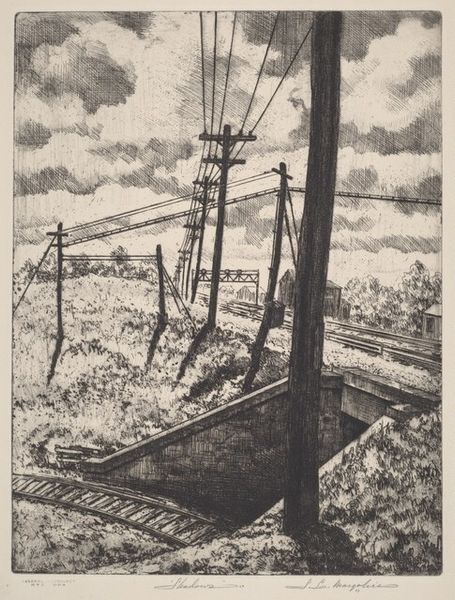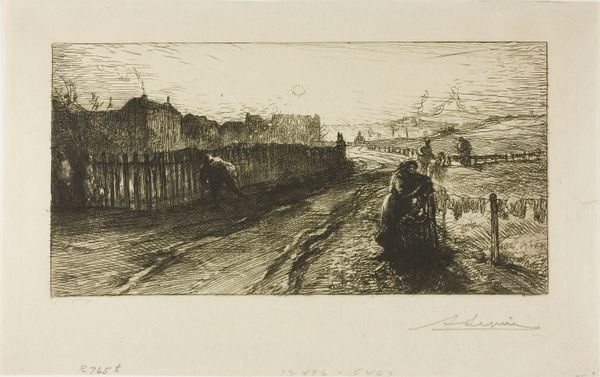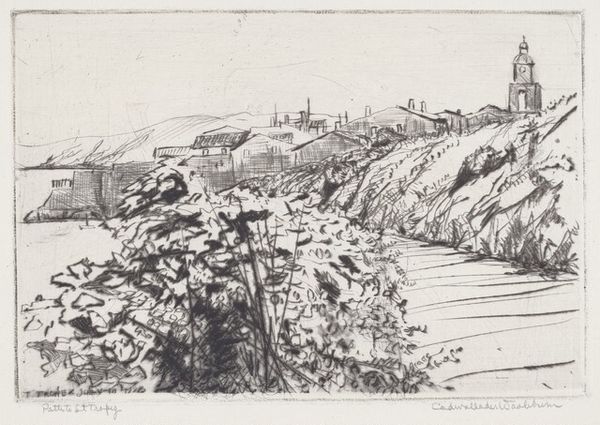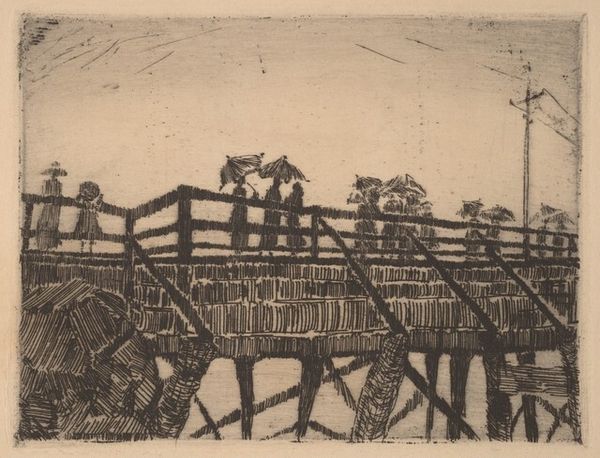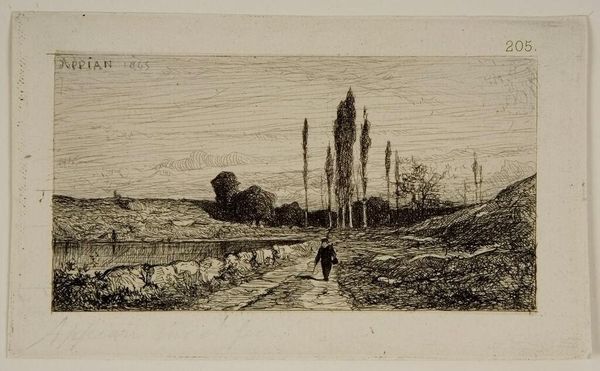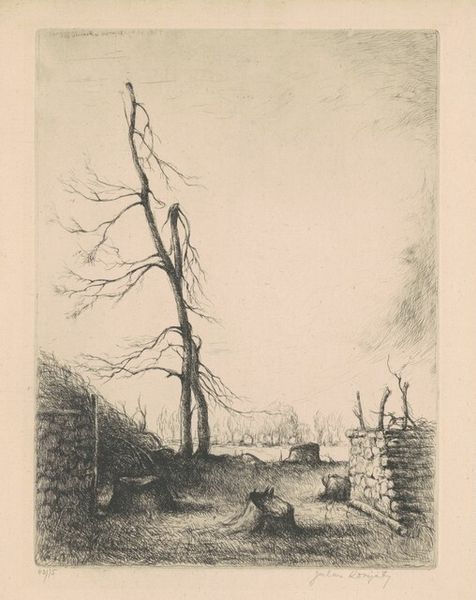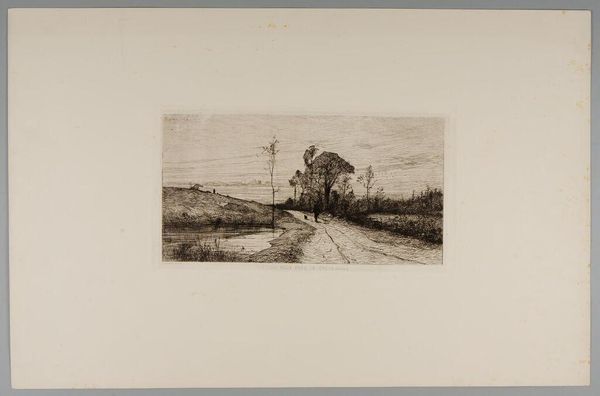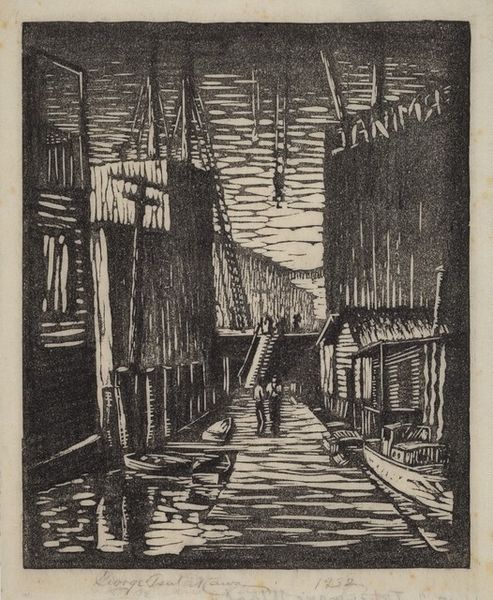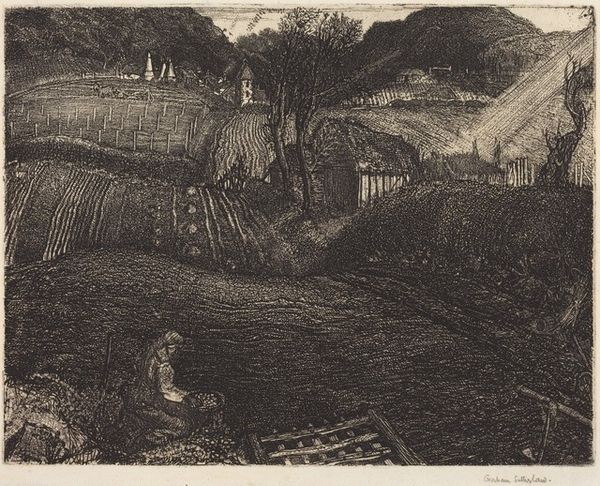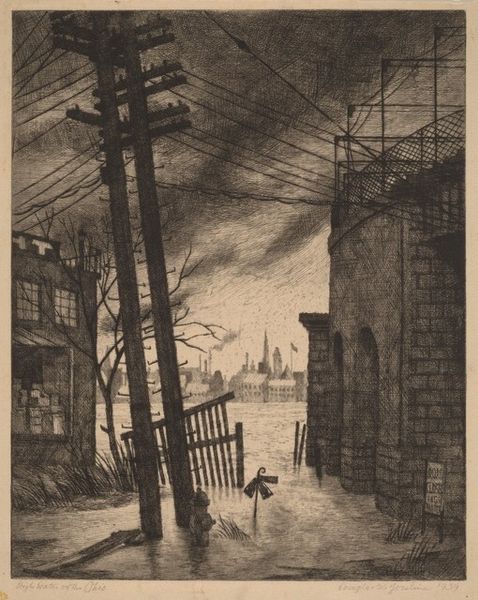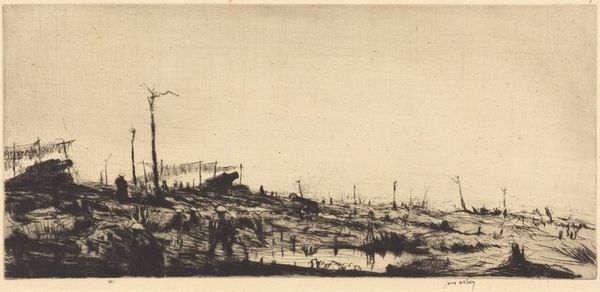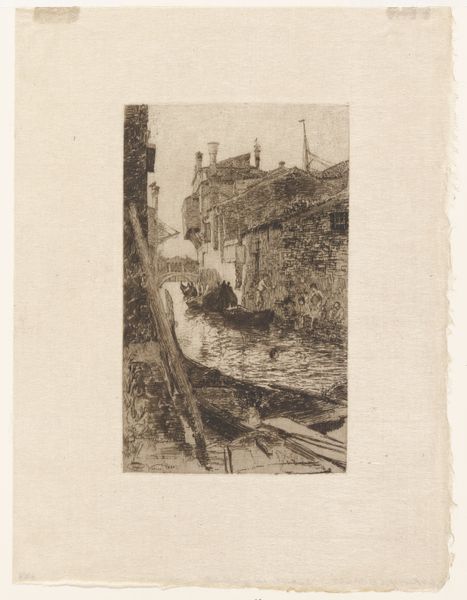
print, etching
# print
#
etching
#
landscape
#
house
#
pencil drawing
#
cityscape
#
realism
#
building
Copyright: Public domain US
Editor: So, this is Edward Hopper’s etching, "The Railroad," from 1922. It's a surprisingly small print. What immediately strikes me is its rather bleak atmosphere, with those looming telephone poles and the rather desolate-looking houses in the background. What do you see in this piece? Curator: Hopper had a real knack for distilling a mood, didn’t he? To me, it whispers of that awkward, in-between space, on the edge of things. Not quite city, not quite country. I wonder if that solitary figure represents Hopper's own feeling of being a bit of an outsider in the art world at that time. The light itself feels hesitant, doesn’t it? A pre-dawn greyness perhaps, filled with possibility, but also tinged with a kind of melancholic loneliness. Editor: I never considered it like that! I was stuck on how the composition draws the eye along the tracks and how the houses and telephone poles have a repetitive character that generates that specific mood... so the man there suggests Hopper’s loneliness? Curator: Perhaps "loneliness" is too harsh; perhaps "introspective" is more apt? Artists pour themselves into their works in all sorts of oblique ways, after all. Hopper may have been exploring this theme: he shows a world constantly altered and "improved" by railroads, which are themselves being gradually overtaken by technology. Maybe this etching portrays a sense of impending technological "isolation", something to think about in a painting such as this. What do *you* take away now? Editor: That feeling of “introspective detachment” does resonate when looking at the piece now! It adds another layer that I appreciate. Curator: Indeed! Art invites us to bring our own experiences, and create entirely new impressions based on new and interesting perspectives. It’s wonderful isn’t it?
Comments
No comments
Be the first to comment and join the conversation on the ultimate creative platform.
